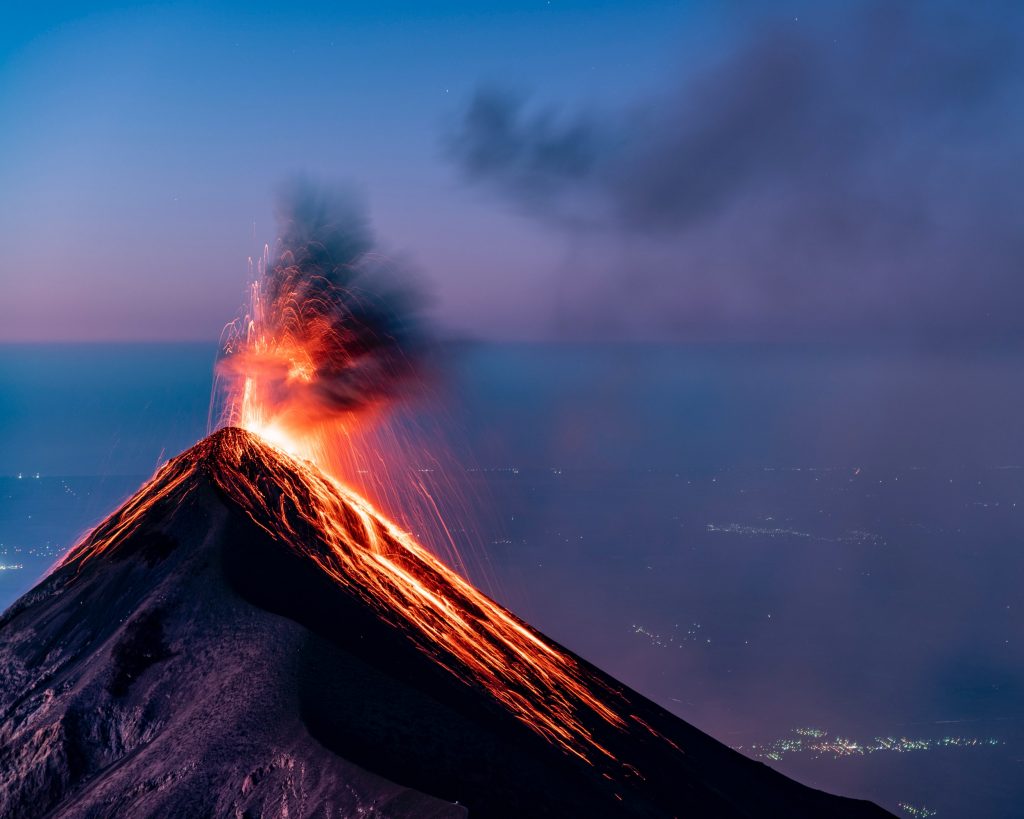
A volcano is a vent or hole in the Earth’s crust from which an eruption occurs. When an eruption occurs, volcanoes can emit dangerous hot gases, ash, lava and rocks which can result in loss of life and property, especially in densely populated areas.
According to the Indonesian National Agency for Disaster Management (BNPB) and the Ministry of Energy and Mineral Resources of the Republic of Indonesia, there have been many volcanic eruptions in 2020. There were 28 eruptions of Mount Sinabung, 18 eruptions of Mount Anak Krakatau, 17 eruptions of Mount Semeru, and the eruption of Mount Merapi 11 times. Counted per 2012, Indonesia has 127 active volcanoes and about 5 million people active within the danger zones. Volcanoes in Indonesia are part of the Pacific Ring of Fire.
In Indonesia, there are four volcanic alert statuses, ranked from most critical to most normal :
- CAUTION indicates that the volcano is about to erupt or is erupting. This state will be preceded by an eruption opening with ash or having the potential to erupt within 24 hours. All you have to do is evacuate the affected area as soon as possible.
- WARNING indicates that there are signs of movement about to occur. At this state there is also an intensive increase in seismic movement and all the data shows that activity could continue into the eruption. If this continues, the eruption might occur in two weeks. What must be done is to conduct socialization in areas that are threatened by disaster and prepare emergency facilities.
- BEWARE indicates an increase in activity above normal levels such as an increase in seismic activity. What must be done is socialization, hazard assessment, and checking available facilities when a disaster occurs.
- NORMAL indicates there is no dangerous and magma activity. In this status, only routine observation and surveying of areas that may be affected by volcanic eruptions are carried out.
The impact of a volcanic eruption can be divided into two categories:
First, Direct Impact such as :
- Mediated trauma, crush-type injuries, and lacerations can be caused by explosions and contact with volcanic masses.
- Hot ash, gas, rock and magma causes burns to the skin.
- Inhalation of gases and fumes can cause acute respiratory disease.
- Acid rain can irritate the eyes and skin.
Second, Indirect Impact such as :
- Volcanic ash can cause toxicities such as the digestive system by ingesting water or eating food contaminated with ash.
- Volcanic ash can also create a risk of trauma from collapsing buildings.
- Volcanic ash can also create communication problems and transportation problems associated with reduced driving visibility.
To deal with this disaster, what should we do?
- Do not panic.
- Use a mask and try to wear clothes that cover the mouth and nose.
- Always stay tuned to trusted sources for the latest information on volcanic activity
- Try to use water that has not been contaminated with ash
- Evacuate if you can, if not then just wait inside the building until the ash rains stop.
When a disaster occurs, try to make sure your condition is safe first and then help save others because when there is a disaster we don’t want to be a burden that can’t do anything.
REFERENCES
Pusat Krisis Kesehatan Kementrian Kesehatan RI. 2016. Mengenal Status Gunung Api Berdasarkan Aktifitasnya. [online] Available at: < https://pusatkrisis.kemkes.go.id/mengenal-status-gunung-api-berdasarkan-aktifitasnya >
Pusat Vulkanologi dan Mitigasi Bencana Geologi. 2020. Informasi Letusan. [online] Available at: < https://magma.esdm.go.id/v1/gunung-api/informasi-letusan/MER >
WHO. 2020. Volcanic eruptions. [online] Available at: < https://www.who.int/health-topics/volcanic-eruptions/#tab=tab_1 >
WOODIES by
Beltsazar Onne Pattinaya
CIMSliography
TNCHRT SCORP CIMSA 2019
Local Committee on Human Rights and Peace CIMSA UKDW 2018/2019